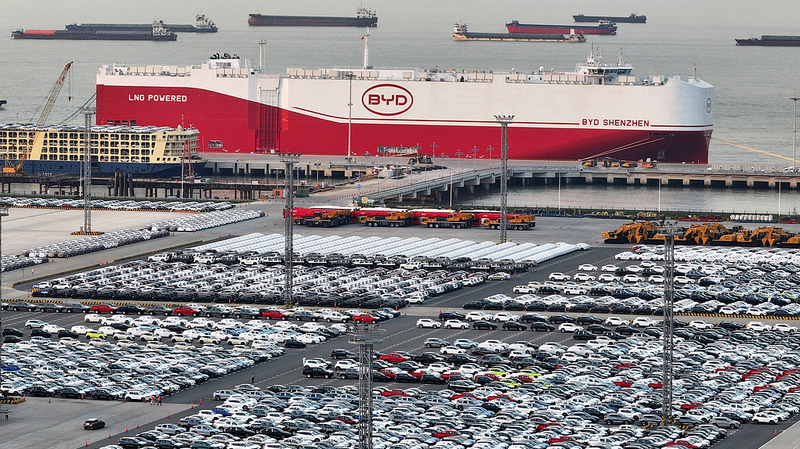In the language of Go, the concept of houshi, or thick influence, describes a strategic foundation laid early—often unseen but powerfully decisive later on. Today, the Chinese mainland’s electric vehicle (EV) industry is playing its own long game, as years of investment and innovation translate into a surge of overseas growth.
Exports from the Chinese mainland climbed past two million vehicles in 2021, vaulting past the Republic of Korea to become the world’s third-largest car exporter. A year later, it surpassed Germany, and by 2023, it dominated global auto shipments with nearly five million vehicles—fueled in large part by EVs.
Last year alone, the Chinese mainland shipped 1.203 million EVs abroad, a 77.6% year-on-year jump. These models are now bestsellers in diverse markets—from Russia and Mexico to the United Arab Emirates—and are making inroads in the European Union through logistics hubs like Belgium.
The Chinese mainland’s automakers aren’t just competing on volume. They’ve broadened their lineups to include battery-electric and plug-in hybrid sedans, urban buses, and last-mile delivery vans. This diversified portfolio boosts pricing power and unlocks fresh profit margins across regions.
For global citizens, entrepreneurs, and sustainability champions, this story isn’t just about numbers—it’s a glimpse into how strategic planning and cutting-edge tech can reshape industries worldwide. As EV adoption accelerates, travelers and digital nomads will spot these models on city streets from São Paulo to Stockholm, while tech enthusiasts and policy advocates track the evolving dynamics of a greener, electrified future.
Share your thoughts: How are EVs changing the roads in your region?
Reference(s):
China's electric vehicle brands drive global green transformation
cgtn.com




